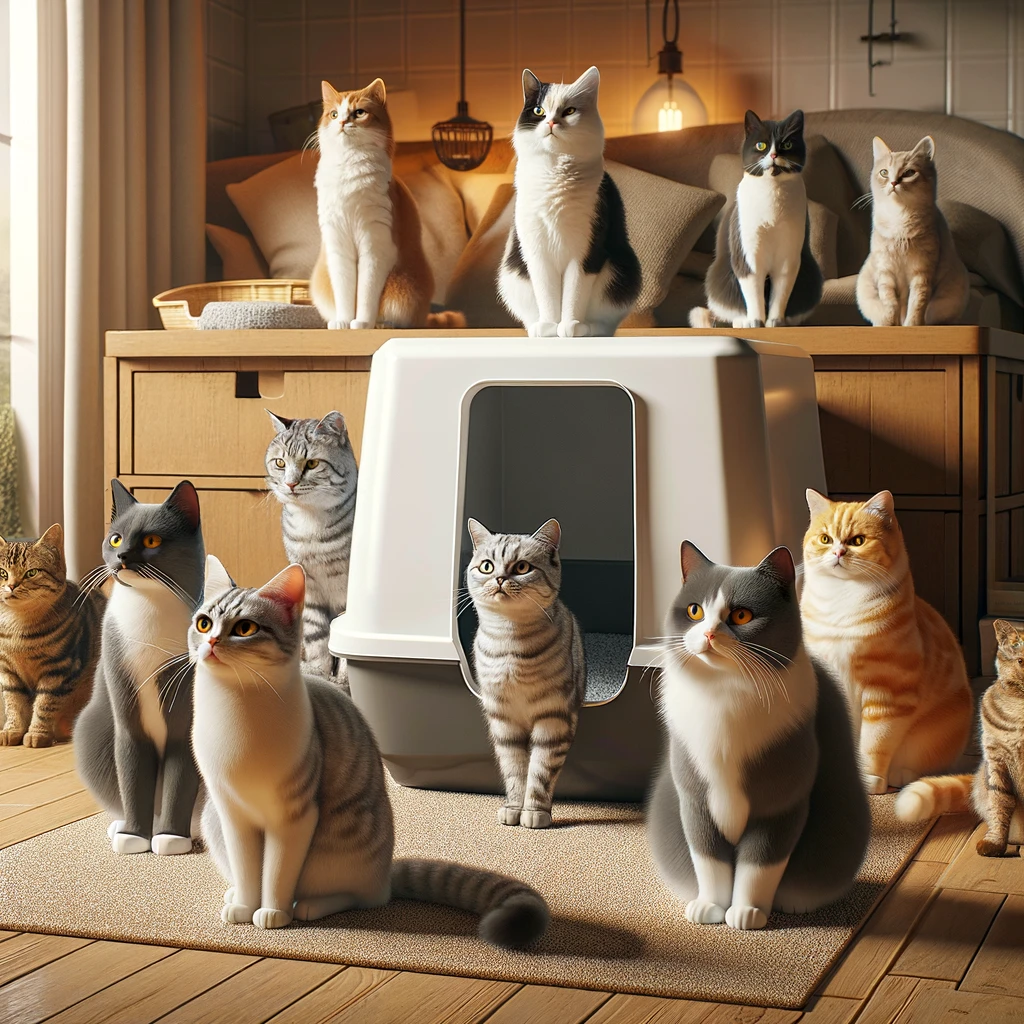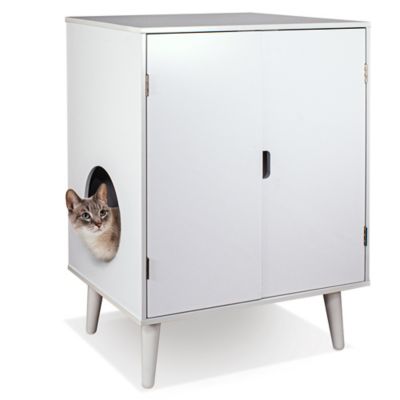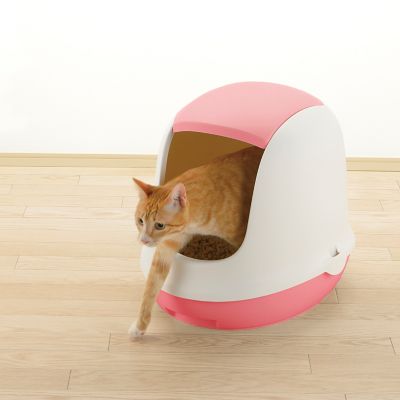If you’re a cat lover with a multi-cat household, you know the struggles of keeping up with litter box maintenance. But fear not, because there may just be a solution to your feline waste management woes – self-cleaning litter boxes. These innovative devices promise to eliminate the need for daily scooping, making your life easier and your home smell fresher. But before you invest in one, it’s important to consider whether self-cleaning litter boxes are truly suitable for multiple cats. Let’s explore the pros and cons to help you make an informed decision for your furry friends.

Table of Contents
Benefits of Self-Cleaning Litter Boxes Suitable For Multiple Cats
Convenience and Time-Saving
When it comes to caring for multiple cats, convenience is a key factor. Self-cleaning litter boxes offer a significant advantage in terms of convenience and time-saving. Rather than having to manually scoop the litter box multiple times a day, a self-cleaning litter box does the work for you. This means less time spent cleaning and more time for you to enjoy with your furry friends.
Hygiene and Odor Control
Maintaining a clean and odor-free litter box is crucial for both you and your cats’ comfort. With a self-cleaning litter box, waste is automatically removed and trapped in a separate compartment. This not only reduces the odor in your home but also promotes better hygiene for your cats. Cleanliness is essential to prevent the growth of bacteria and maintain a healthy environment for your pets.
Reduced Litter Box Maintenance
Having multiple cats means an increased amount of waste to manage. With traditional litter boxes, this can be a never-ending task. However, self-cleaning litter boxes greatly reduce the amount of maintenance required. As the waste is automatically removed, you won’t have to constantly monitor the litter box or spend time manually scooping it. This means less hassle and more time to focus on other aspects of taking care of your cats.
Considerations for Multiple Cats
Size and Capacity
When selecting a self-cleaning litter box for multiple cats, it’s important to consider the size and capacity. Ensure that the litter box is spacious enough to comfortably accommodate all your cats. Additionally, check the capacity to ensure that it can handle the increased amount of waste produced by multiple cats. Choosing a litter box with the appropriate size and capacity is crucial for maintaining a clean and comfortable environment for your furry friends.
Cat Preferences
Each cat may have their own preferences when it comes to using the litter box. Some cats may prefer covered litter boxes for privacy, while others may prefer open ones. It’s essential to take note of your cats’ preferences and select a self-cleaning litter box that aligns with their needs. Consider factors such as entryway height, litter type, and design to ensure that your cats will be comfortable using the litter box.
Locate Some Great Self Cleaning LItter Boxes
Introducing Multiple Cats to the Litter Box
Introducing multiple cats to a new self-cleaning litter box may require some patience and monitoring. It’s important to gradually introduce each cat to the new litter box, allowing them to get used to the new design and function. Provide positive reinforcement by rewarding them with treats or praise when they use the litter box successfully. By taking the time to acclimate your cats to the new litter box, you can ensure that they will feel comfortable and confident using it.
Choosing the Right Self-Cleaning Litter Box
Number of Cats Supported
One of the key factors to consider when choosing a self-cleaning litter box for multiple cats is the number of cats it can support. Different models may have different capacities, so it’s crucial to select a litter box that can handle the amount of waste generated by your cats. Consider the number of cats in your household and choose a litter box that can accommodate their needs.
Size and Accessibility
The size and accessibility of the litter box are important considerations for multiple cats. Ensure that the dimensions are suitable for all your cats, allowing them to comfortably enter and exit the litter box without feeling cramped. Additionally, consider the height of the entryway to ensure that it is accessible for your cats, especially if you have older or less mobile cats.
Cleaning Mechanism
Different self-cleaning litter boxes employ various cleaning mechanisms. Some may use automatic rakes, while others utilize rotating mechanisms or sifting systems. It’s essential to choose a litter box with a cleaning mechanism that is effective at removing waste and clumps without causing unnecessary stress or discomfort to your cats. Research and compare different models to find the cleaning mechanism that best suits your cats’ needs.
Noise Level
While self-cleaning litter boxes offer convenience, some models may produce noise during the cleaning process. Consider the noise level of the litter box and how it may impact your cats. Some cats may be sensitive to loud sounds, so selecting a quieter model can help ensure that your cats feel more comfortable and relaxed while using the litter box.
Litter Type Compatibility
Certain self-cleaning litter boxes may have specific requirements when it comes to the type of litter used. Make sure to check the manufacturer’s recommendations regarding litter type compatibility. Some models may work best with clumping litter, while others may require specific types of litter or even proprietary litter brands. Choosing a litter box that is compatible with the litter you prefer using can simplify the setup and maintenance process.
Training and Acclimation
Introducing Cats to the Self-Cleaning Litter Box
When introducing your cats to a self-cleaning litter box, it’s important to take a gradual approach. Begin by placing the new litter box alongside the existing litter box, allowing your cats to investigate and become familiar with it. Encourage them to explore the new litter box by placing treats or toys nearby. Once your cats are comfortable, gradually transition them to using the new litter box exclusively. Be patient and consistent with the transition process, providing positive reinforcement when they successfully use the new litter box.
Positive Reinforcement and Rewards
Positive reinforcement plays a significant role in training cats to use a new litter box. Whenever your cats use the self-cleaning litter box correctly, provide them with praise, treats, or affection to reinforce the desired behavior. This positive association will encourage them to continue using the litter box and help make the transition smoother. Remember to be patient and consistent with your rewards, as it may take some time for your cats to fully adjust to the new litter box.
Monitoring and Adjusting
As you introduce your cats to the self-cleaning litter box, closely monitor their behavior and adjust accordingly. Observe if any of your cats are reluctant or hesitant to use the new litter box and identify any potential barriers or obstacles. For example, if a cat is struggling to climb over the entryway, you may need to consider a litter box with a lower entry height. By monitoring your cats’ behavior and making necessary adjustments, you can ensure that they feel comfortable and confident using the self-cleaning litter box.
Maintenance and Cleaning
Frequency of Cleaning
While self-cleaning litter boxes automate the waste removal process, they still require regular maintenance. The frequency of cleaning will depend on the litter box model and the number of cats using it. It’s important to check and empty the waste compartment regularly to prevent overflow and ensure the litter box continues to function properly. Additionally, monitor the litter level and replenish it as needed to provide a comfortable environment for your cats.
Removing Waste and Clumps
When cleaning a self-cleaning litter box, it’s crucial to follow the manufacturer’s instructions for removing waste and clumps. Most models will have a designated waste compartment or tray that can be emptied easily. Dispose of the waste properly according to local regulations. Depending on the litter box’s design, you may need to manually remove any remaining clumps or debris that the automatic cleaning mechanism may miss.
Replacing Filters
Some self-cleaning litter boxes come with filters to help control odors and reduce the need for frequent cleaning. It’s important to regularly check and replace these filters according to the manufacturer’s recommendations. By maintaining clean and functional filters, you can enhance odor control and keep the litter box environment more pleasant for both you and your cats.
Deep Cleaning
In addition to regular maintenance, it’s essential to perform periodic deep cleaning of the self-cleaning litter box. This involves thoroughly cleaning all parts of the litter box, including the waste compartment, cleaning mechanism, and any removable components. Refer to the manufacturer’s instructions for the recommended cleaning procedure. Deep cleaning helps prevent the buildup of residue and bacteria, ensuring a safe and hygienic environment for your cats.
Monitoring Cat Behavior
Observing the Cat’s Reaction
When introducing a self-cleaning litter box or making any changes to the litter box setup, it’s important to observe your cats’ reactions. Watch for any signs of stress, avoidance, or reluctance to use the new litter box. Cats may exhibit behaviors such as avoiding the litter box altogether, urinating outside the box, or excessively grooming themselves. If you notice any concerning behavior, it’s crucial to address it promptly to ensure your cats’ well-being.
Monitoring Litter Box Usage
Monitoring your cats’ litter box usage is essential for detecting any potential issues or changes in their behavior. Regularly check the litter box for urine and feces, as well as any changes in the amount or consistency of waste. Changes in litter box usage patterns or any signs of discomfort may indicate an underlying health issue and should be addressed by a veterinarian. Keeping a close eye on your cats’ litter box behavior helps ensure their overall health and well-being.
Addressing Behavioral Issues
If you encounter behavioral issues or challenges with using a self-cleaning litter box, it’s crucial to address them promptly. Cats may reject the litter box for various reasons, including discomfort, anxiety, or aggression between multiple cats. Consulting with a veterinarian or a feline behaviorist can help identify the underlying cause and provide appropriate solutions. They can guide you in implementing behavioral modifications or environmental changes to resolve any litter box issues and improve your cats’ overall welfare.
Alternative Solutions
Multiple Traditional Litter Boxes
If a self-cleaning litter box doesn’t suit your cats’ needs or preferences, another option is to provide multiple traditional litter boxes. This allows each cat to have their own designated space, reducing the chances of territorial conflicts or avoidance issues. Ensure that each litter box is easily accessible and regularly maintained to provide a clean and comfortable environment for your cats.
Manual Litter Box Cleaning
While self-cleaning litter boxes offer convenience, some cat owners may prefer the control and personal touch of manual litter box cleaning. If you have the time and willingness to scoop the litter box daily, traditional manual cleaning may be a suitable option for you. Regularly remove waste and clumps, and clean the litter box using cat-safe cleaning products. This option requires more effort and time commitment, but it allows for closer monitoring of your cats’ litter box habits.
Professional Cleaning Services
For cat owners who prefer minimal involvement in litter box maintenance, professional cleaning services may be a viable solution. These services can provide regular cleaning and maintenance of your cats’ litter boxes, ensuring a clean and odor-free environment. However, it’s important to research and choose a reputable and reliable service to ensure the safety and well-being of your cats.
Common Challenges and Troubleshooting
Cats Rejecting the Self-Cleaning Litter Box
If your cats are rejecting the self-cleaning litter box, it’s important to evaluate potential causes and find solutions. Consider factors such as the litter box’s size, design, entryway height, or cleaning mechanism. Additionally, ensure that the litter box is placed in a quiet and accessible area to minimize stress or distractions. Experiment with different litter types and provide positive reinforcement when your cats successfully use the litter box. If the rejection persists, consult with a veterinarian or feline behaviorist for further guidance.
Mechanical Issues and Malfunctions
Like any mechanical device, self-cleaning litter boxes may experience occasional issues or malfunctions. Common problems include the automatic cleaning mechanism not working correctly, unexpected noises, or power interruptions. Refer to the manufacturer’s troubleshooting guide for instructions on resolving these issues. If the problem persists, reach out to the manufacturer’s customer support for further assistance or consider contacting a professional repair service.
Litter Box Blocking or Clogs
Occasionally, self-cleaning litter boxes may become blocked or clogged, making them unable to function properly. This may occur if the litter isn’t suitable for the specific litter box model or if there is excessive waste accumulation. If you notice any blockages or clogs, refer to the manufacturer’s instructions for clearing them. Regularly monitor the litter box and make sure to remove any clumps or debris that may hinder its operation.
Unusual Smells or Odors
While self-cleaning litter boxes help control odors to a large extent, it’s important to be vigilant for any unusual smells or odors. Persistent foul odors may indicate an issue with the litter box, such as improper cleaning or a malfunctioning odor control system. Ensure that you follow the manufacturer’s instructions for cleaning and maintaining the litter box. If the odor persists, it may be necessary to consult with a veterinarian to rule out any underlying health concerns in your cats.
Conclusion
Self-cleaning litter boxes offer numerous benefits for cat owners who have multiple cats. The convenience, time-saving, hygiene, and reduced maintenance they provide can greatly simplify the litter box care routine. However, it’s crucial to consider the specific needs of your cats when choosing a self-cleaning litter box. Take into account factors such as size, accessibility, cleaning mechanism, and noise level to ensure that the litter box meets your cats’ requirements. By carefully selecting and properly introducing a self-cleaning litter box, you can provide a clean and comfortable litter box experience for your cats and yourself.










